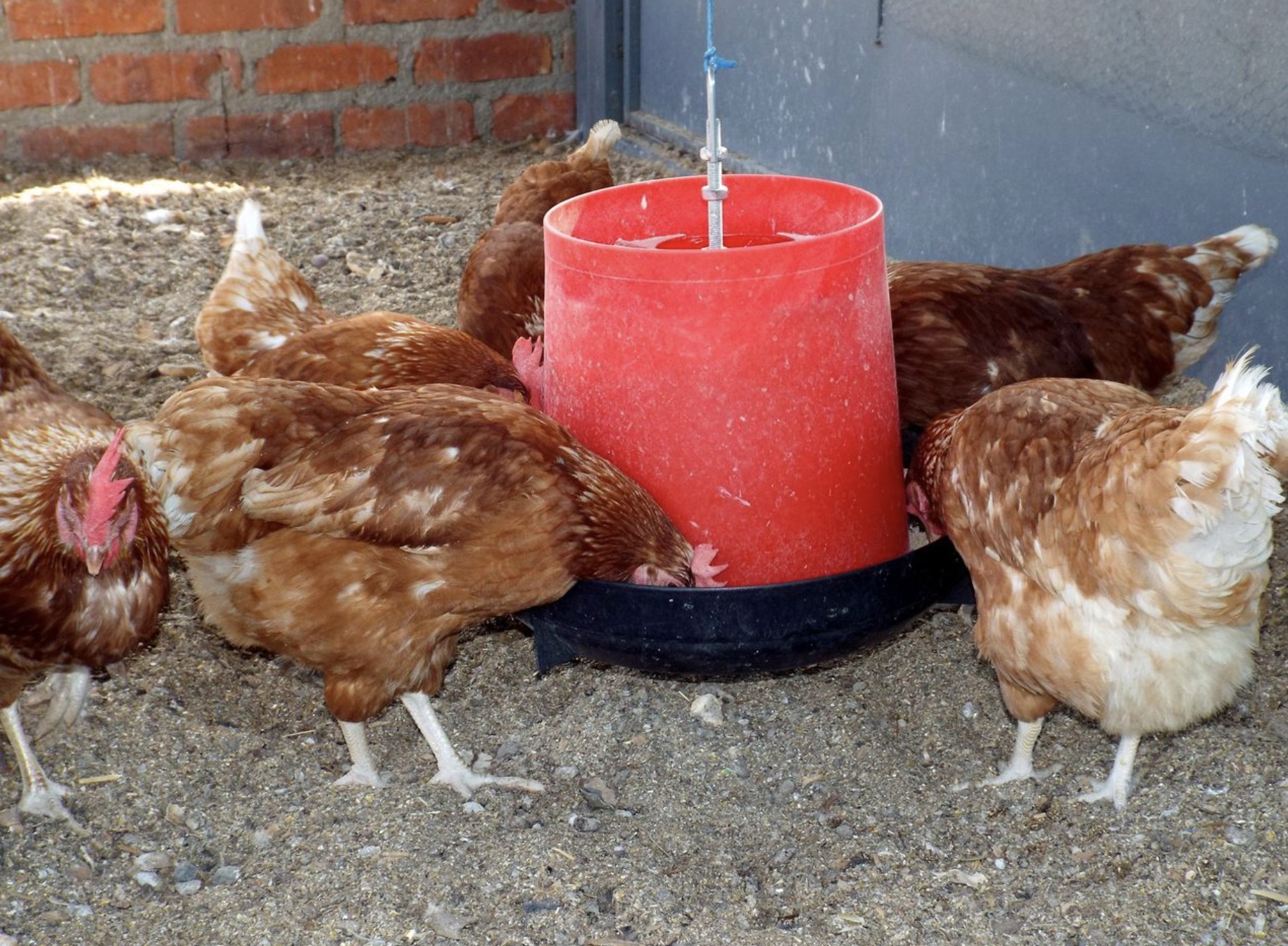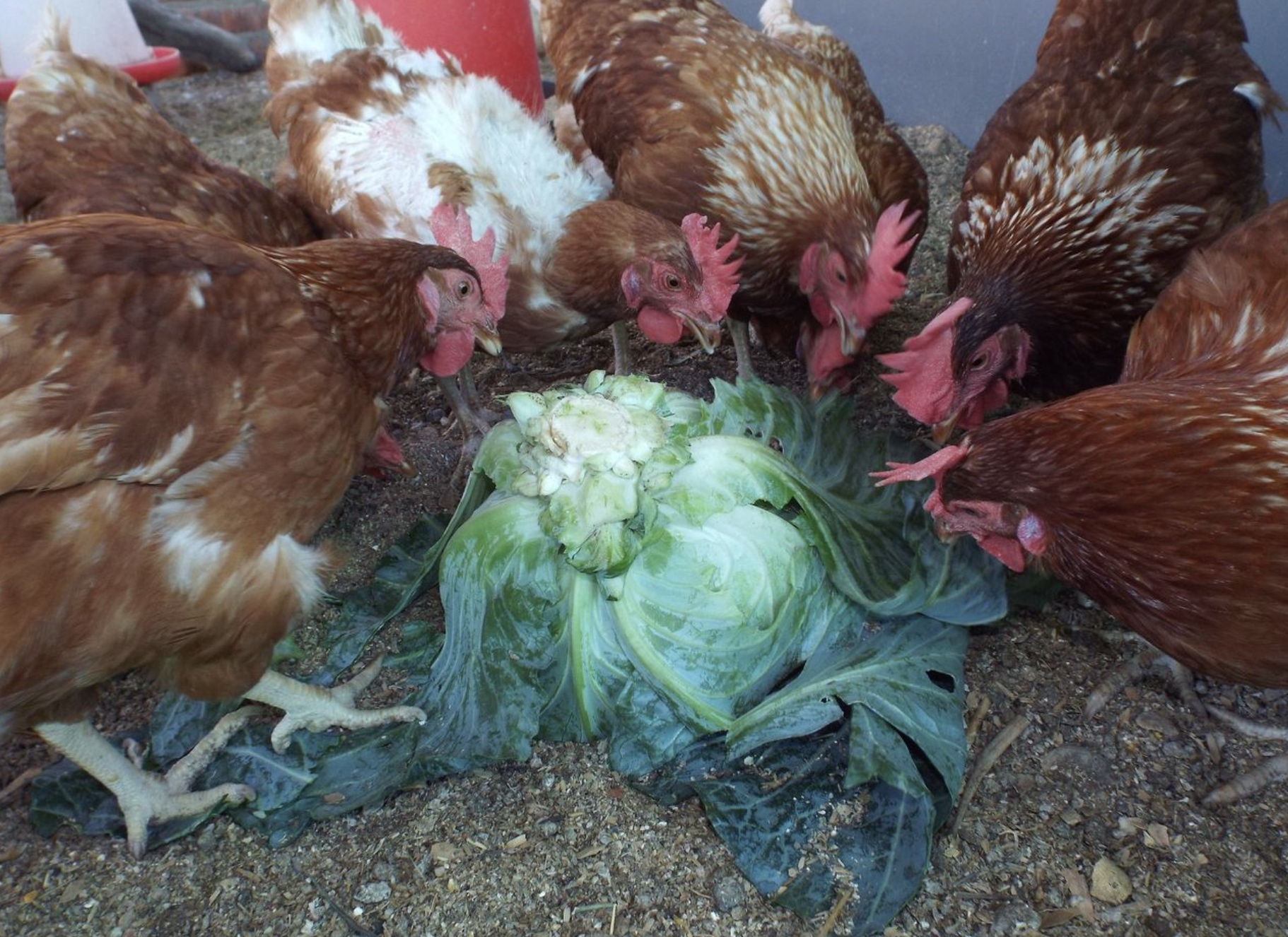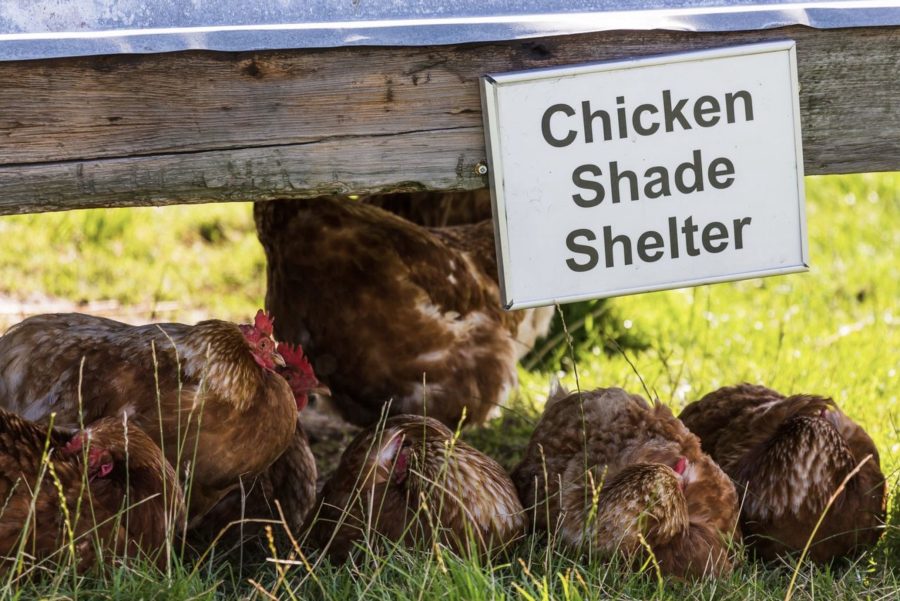Paul Donovan investigates the impact high temperatures can have on poultry and provides tips to keep your chickens cool and comfortable when the mercury rises.
One of the problems with living in a hot country where the mercury regularly hovers around the 35-40ºC mark, is keeping the chickens cool. Even though mine are housed in a large open frame pen with a roof and good air movement, trying to keep the birds cool sometimes can be a horrendous problem.
Despite my best attempts, last year I lost two hens due to heat stress. In the end I just had to let the birds free-range and suffer the consequences of having a garden picked to bits. But at least the birds could find their own cool areas to rest in.
Although the UK is seldom bathed in such glorious heat, that does not mean potential heat related problems should be discounted. Heatwaves in the UK can and do cause chickens to suffer. Birds which are kept in a temperate climate are perhaps more at risk when the temperature does rise, than those breeds which are conditioned to high temperatures. For example my Tswana hens do not begin to show signs of heat stress until the temperature hits 32-35ºC.
WHAT IS HEAT STRESS?
During cooler temperatures it is not difficult for the chicken to cope with quite a significant drop in temperature. The thick insulating layer of feathers help it to weather out the drop; a bit like us putting on a thicker coat. However, the problem arises when the temperature goes the other way and the chicken needs to loose heat. If it is unable to do so efficiently, and its body temperature begins to rise, then the bird is in real trouble. At this point it enters a state called heat stress.
The various metabolic processes the body undertakes to keep us alive, invariably generate heat. This is controlled by various means, the most fundamental of which is sweating. Of course birds lack sweat glands so are unable to shed excess heat in this manner.
To some extent, the level of metabolic heat production will be determined by contributing factors such as; genetics, the size of the bird, the breed, feather cover, size of wattles and combs, food intake, drinking water temperature, and level of activity. These are compounded further still, by the number of birds being kept together (stocking density), the type of housing they are being kept in, and level of ventilation. High numbers of birds being kept in an inadequately ventilated house will suffer more, because the higher level of metabolic heat being generated cannot escape.

Digestion requires a lot of water and produces heat, which will increase body temperature
SIGNS OF HEAT STRESS
As the air temperature rises, the internal mechanisms of the body will begin to undergo change, and externally the chicken will begin to exhibit various changes in its behaviour. To the keen-eyed observer these changes in behaviour will be an indication that something is untoward with the bird, and should be acted on.
WHAT’S GOING ON INSIDE?
Before we look at external signs, let’s consider what’s going on inside the bird. What you might call the ‘invisible’ signs. Should the body temperature rise and remain at an elevated level for a prolonged period of time, certain physiological and biomechanical changes will begin to take place which can damage internal organs. For example the heart increases in size, the kidneys swell and become inflamed, and the blood becomes thicker and darker than normal.
The pulse rate falls, pH of the blood plasma begins to change, while that within the cells falls. Stress hormones begin flowing into the blood and certain metabolic functions are deactivated to help protect sensitive heat intolerant tissue. The body also begins to divert resources to areas which are suffering as a consequence of the heat to try and restore their functioning. Bone metabolism may also be disrupted. All of these will ultimately impact on the external factors which you see developing on a hot day in a bird.
EXTERNAL SIGNS
Like a dog, the absence of sweat glands mean the chicken relies on its respiratory system to cool itself down. So, one of the first visible signs that a bird is suffering from the heat stress, is panting. The normal respiratory rate of a chicken is between 12 and 30 breaths per minute (-/+ [average] temperature). While the chicken is panting its breathing rate can rise to 250 breaths per minute. As it breaths out, hot air from the lungs is being released and replaced with cooler air. Actually, the act of panting itself requires a sizable amount of energy, and in turn generates a considerable amount of body heat which is almost compounding to a vicious circle.
At the same time as panting, the bird will raise and spread its wings, and adopt a crouching position close to the ground. It may then begin to shuffle into the soil as though it were about to dust bath. This manipulation of the feathers allows hot air to escape, and cool air to enter. If there is a slight breeze the liberation of heat will occur quite quickly; very much akin to what we feel when a breeze blows over sweat on our arms.
The bird may appear lethargic, lay down and appear ‘limp’ and unresponsive with its eyes closed and may twitch and show signs of seizures and convulsions. Its comb, wattle and skin may appear lacklustre; in advanced stages of heat stress, the skin, comb and wattle, turn dark in colour. If the bird is moving about, it may adopt a staggering fashion, as though it were drunk. There is a decrease in appetite, and an increase in thirst.
If the bird is approaching heat stress but not yet showing signs of it, one sign to look out for is a sudden, unexpected drop in egg production. This is generally the first signs of my hens suffering as a consequence of a rise in the mercury.
From 10 eggs from 10 birds a day, I may begin to see a taping off to 6 or 7 a day. If this coincides with an increase in temperature, I know early stages of heat stress are on their way, and it’s time to take some action. In line with this, I may see a reduction in the size of the egg and poor shell quality. This can be attributed to the loss of appetite and therefore reduction in calcium and mineral intake. A lot of calcium and liquid goes into making an egg, and so a reduction in either can seriously affect the quality of the egg.
Over a period of time, the bird’s weight will begin to drop, overly wet droppings and diarrhoea are present leading to an increased loss of fluid and electrolytes. An increase in mortality and feather plucking will be evident.
If birds are being used for breeding, heat stress can have short to long term affects, such as the lack of desire to mate, poor or reduced fertility, and poor semen quality. Birds bred from these individuals could show inconsistent growth rates (grow slower), are lighter in weight and lay fewer eggs.

Be aware that chicks are vulnerable to heat stress
EFFECTIVE SOLUTIONS
Once you have identified that your chickens are suffering from heat stress, it’s time to take prompt remedial action. Fortunately, effecting solutions to the problem is relatively easy. At the forefront are fresh, clean drinking water, and a well-ventilated chicken coop/house. If both of these are offered, they can ultimately act as a prevention, rather than a remedial cure. Provide cool, clean water in the morning, and replace it midday/early afternoon should the day turn out to be unexpectedly hot.
When I experience very hot temperatures, I split a bucket of ice cubes between the two water containers. This provides a continual stream of cool water for several hours. I also add an electrolyte to the water.
Replenishment of electrolytes is important, as during heat stress, as the chickens drink, they produce runny droppings which increases electrolyte loss and accelerates the birds into the next phase, dehydration. Water on its own has no electrolytes, so losses are not being replaced, and the chicken will remain in electrolyte deficit until such times as they can be replaced, which is detrimental to their health.
During the normal run-of-the-mill day, my hens have access to food 24/7. During excessively hot days, I removed the feed hoppers early morning after they have had their first feed. The reason I do this, is the digestive process not only requires a lot of water, but produces heat, which ultimately increases the body temperature. The food is replaced late afternoon as the temperature begins to drop so as to ensure the birds get a good feed before they roost for the night.
Although I remove the feed hoppers, my hens don’t suffer from starvation. I give them a lot of greens and fruit which obviously contains high levels of water which helps cool them down and is easier on the digestive system. And when in season, I split a watermelon in half and give them.
If I notice the birds are suffering despite my best attempts to cool them down, I have a hand sprayer which I mist them with. They seem to appreciate this, as after they have a good dust bath which will help cool them down even more, as the movement of feathers will help dissipate heat.
I also change the litter during the summer months. Organic matter when it gets wet (faeces for example,) generates heat as it begins to decompose, so I change it for an inert substance such as sand which absorbs a lot of moisture without decomposing. I also try and limit disturbing the birds as much as possible. Mine, as soon as they see me, gather at the wire excitedly clucking away, because they think they are going to get tit bits.
As they become excited this elevates their body heat, and only compounds the heat stress even more. Therefore, I only have interaction with them early in the morning and late in the afternoon.

Feeding plants with high moisture content can cool birds down
Although these are remedial treatments, one should also look at how the chickens are being kept. Controllable ventilation is obviously important, as is the number of birds kept within a particular sized coop/house. The more birds there are, the greater the heat generated, and the more the ventilation has to deal with. If you have the facilities, splitting the birds into smaller groups will benefit them greatly.
If the chickens are housed indoors all the time, and the building is large enough, installing a fan will help circulate cool air. Obviously only use the fan during really hot days, otherwise you could chill the birds. While on the subject of building, insulating the roof can significantly reduce radiant heat from the sun, and go a long way to keeping the building cool. A lot of people also advise painting the walls white, as this will help reflect heat.
CONSIDER FREE-RANGE BIRDS TOO
Although less susceptible to heat stress, because they can pick and choose where they rest, consideration should still be given to the health of free-range chickens. They should have access to a ready supply of fresh water and plenty of shade; avoid keeping them on bare, exposed pieces of ground as this can reflect heat. Give them plenty of grass or shrubs to hide amongst. A patch of loose soil beneath a shaded tree, or amongst some grass will be most welcome. The underlying soil will be cooler, and when scratched away, will give the birds the equivalent of a cool bath to lay in.
TAIL-END
The keen-eyed observer will be familiar with how their birds act on a day to day basis. It is important, though, that we be more observant during hot weather. If hot weather is forecast, pre-empt how you could best manage your birds during that period. Prevention is always better than cure, and common sense really comes into play when dealing with heat stress. Think how you would keep cool, and then apply that to your chickens.
This article originally appeared in the August 2024 issue of The Country Smallholder magazine. To receive regular copies of The Country Smallholder magazine featuring more articles like this, subscribe here.
For FREE updates from the world of smallholding, sign up for The Country Smallholder newsletter here.








